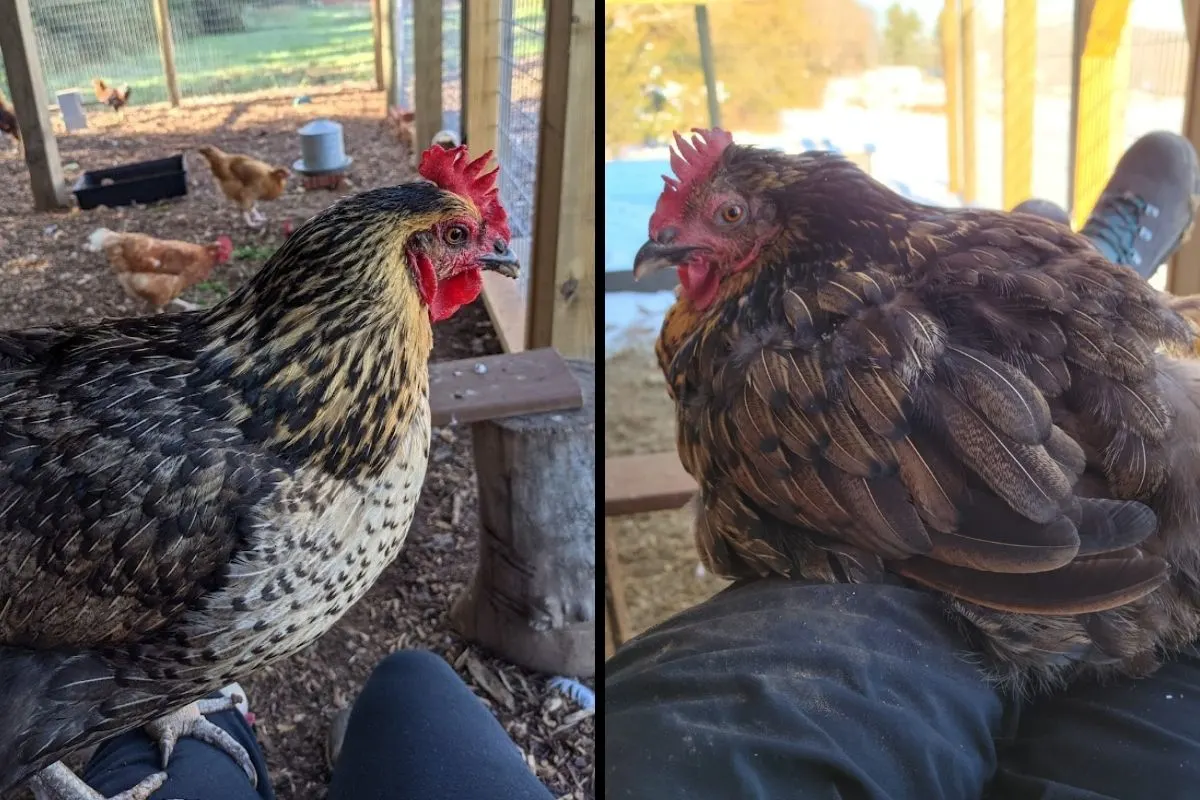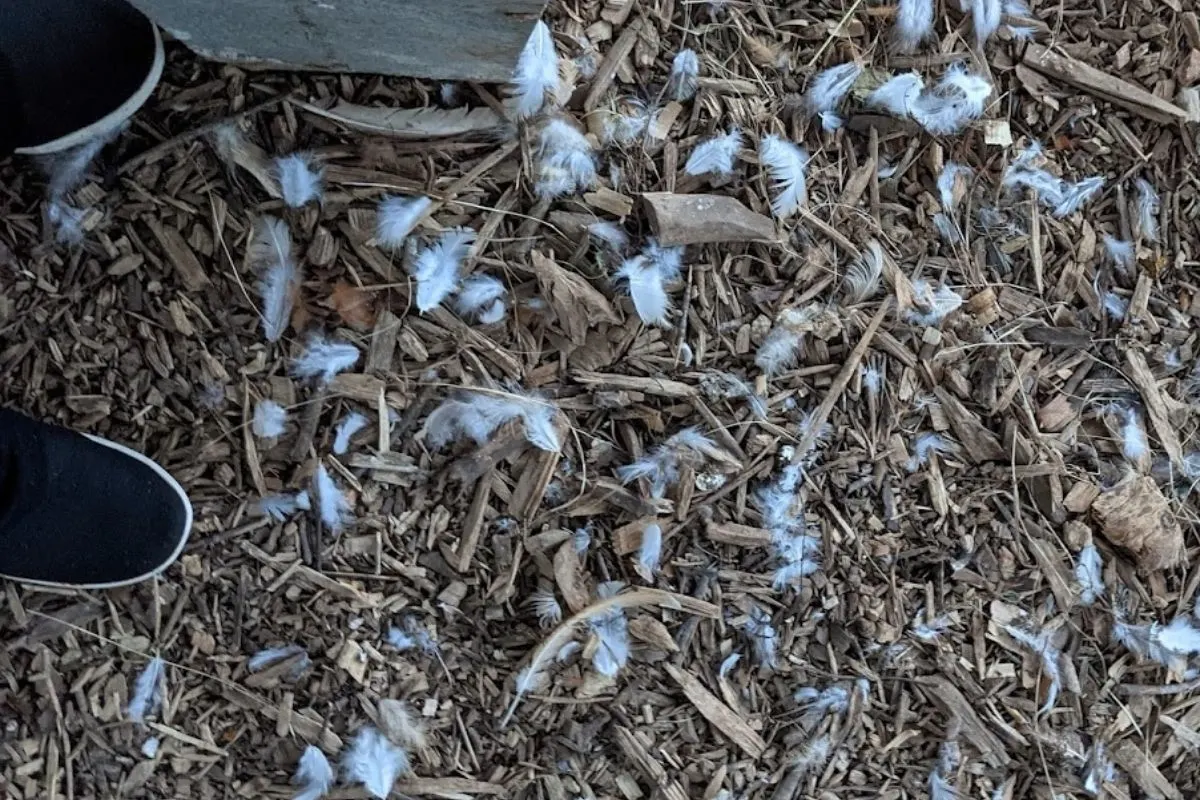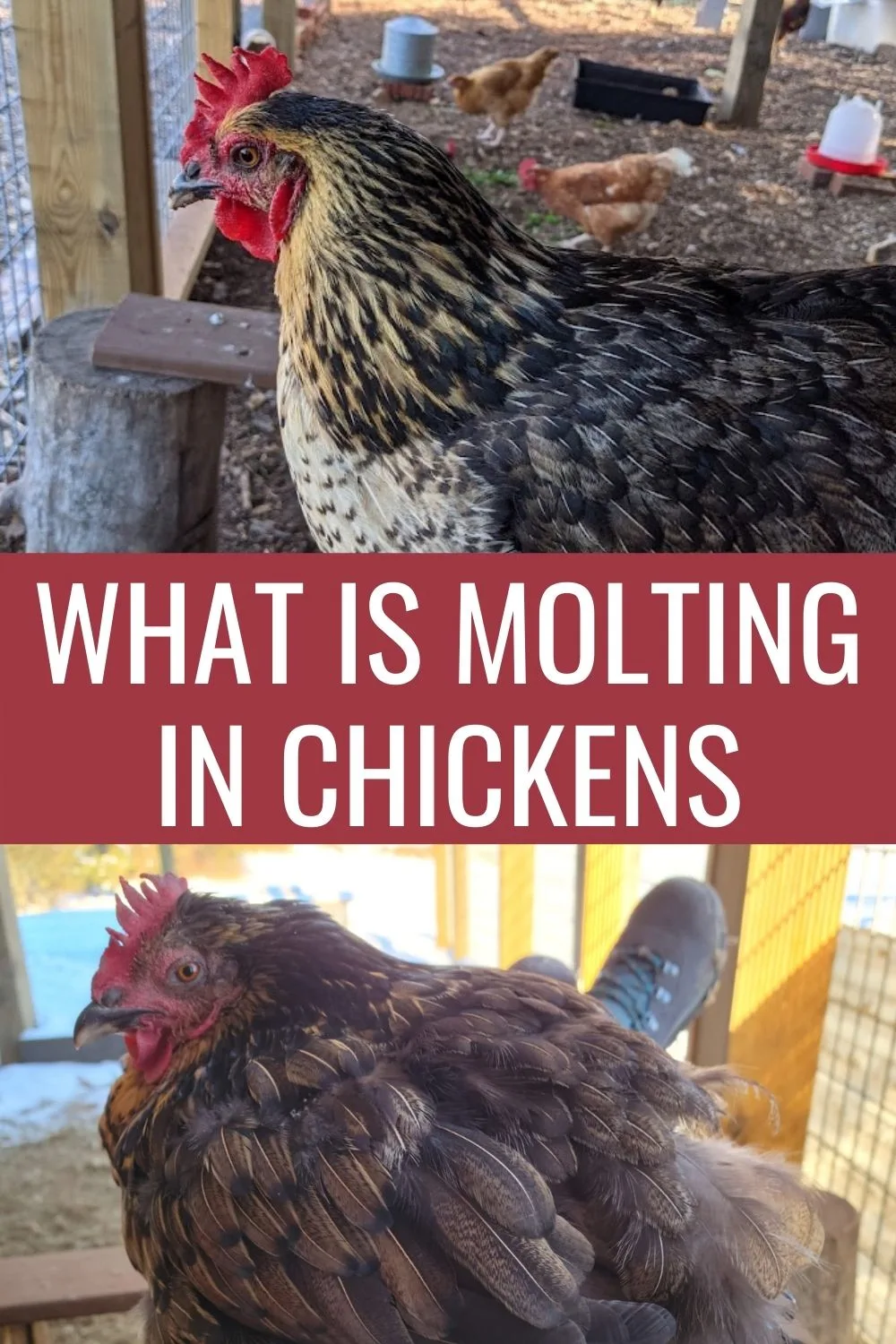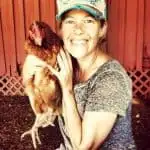You may notice in the fall that your chickens begin to lose their feathers. This can be alarming if you are experiencing it for the first time, but it is actually a normal occurrence called molting. In this article, we’ll take a look at what is molting in chickens and why does it happen.
If you go out to your chicken coop in the fall and it looks like a war zone with feathers everywhere, your ladies probably started molting. It’s time to add some protein to their diet and baby them a bit, and they’ll be back to normal soon.

What Is Molting In Chickens?
The basic definition of molting is the process of losing and replacing feathers. A chicken’s feathers make up six to eight percent of its total body weight. Their purpose is to protect the bird from injury and sunburn, conserve body heat and provide a barrier from wind and water.
- Molting will typically begin to happen when the bird is about eighteen months of age.
- Chickens will molt annually throughout their life cycle.
- The entire process can take a couple of weeks or a month or more depending on the individual bird.
- Molting is a perfectly normal process and is not an indication of disease.
- The best egg layers tend to molt late and fast.
- The poor egg layers will start early and molt slower.
What happens during the process of molting?

As the days begin to grow shorter, a chicken’s body instinctively knows to start shedding feathers for the coming cold weather. A chicken will start to molt during the late summer and into fall.
Usually, you will not notice the feather loss until they go into a full molt. You will notice your bird starts to look scraggly and bald in some places. New chicken owners will sometimes panic if they have never seen a bird molt before. They can look pretty pitiful as they go through the process. Just know that it is completely normal and once they are done, they will have beautiful, shiny feathers once more.
Just prior to a molt your chicken’s feathers will take on a dull appearance. Molting typically starts with the head and neck feathers and continues on down to the tail. This keeps the bird from being completely naked during the process.
You will begin to notice the molt more once it reaches the back area. As the feathers begin to grow back in you will see pinfeathers, which are sometimes called blood feathers because they carry a supply of blood to grow the newly emerging feather.
Once the feather has fully grown in the blood supply will cut off and it will no longer grow. This means if a feather gets broken, it will not grow back in until the next molt. Once the molt is complete your bird will look fully feathered, shiny, and ready to take on the cold months ahead.
Protein and molting
A chicken’s feathers are eighty-five percent protein and during the molting season, the need for protein in your bird’s diet greatly increases. The biggest indicator that your chicken is losing protein is when the feathers start to take on a dull sheen. This happens at the beginning of a molt.
Adding protein at this time can help them through the molt faster. There are several ways to supplement protein into your chicken’s diet:
- Kitten chow with forty percent protein
- Black oil sunflower seeds, or BOSS
- Mealworms or dried soldier fly larvae
- Sprouted grains, such as alfalfa or sesame seeds
- Fish
- Cooked eggs
- Purina feather fixer
I throw out a three-way scratch to my chickens every morning to get them active and scratching around their pen. During the molting season, I will add kitten chow, mealworms, BOSS, and Purina feather fixer to their daily scratch to supplement their protein. It has always worked really well for my flock.
Another reason you want to up the protein intake during molting is to discourage your birds from picking at the newly growing feathers. This usually occurs if they don’t have enough protein in their diets during this time.
Why have my hens stopped laying eggs?
As you can probably imagine molting is extra hard on a chicken. The energy it takes to grow back all those feathers is very taxing on the body. You will probably notice that your hens will stop laying at this time. This is normal and to be expected during the molt.
Some hens will grow their feathers back faster and begin to lay sooner than others. Chickens bred for high egg production tend to go through the process quicker and get back to laying.
I’ve had some leghorn hens that would lay through the entire molt. It just depends on the individual bird. Your heritage and ornamental breeds tend to take longer and egg production may drop off for a month or more. Adding extra protein to the diet as discussed above can help speed up the process.
So the next time you go out to your coop and see a bunch of feathers on the ground, don’t be alarmed… it’s most likely the start of molting season. Each bird will molt at a different pace, some faster than others. Remember that adding a bit of protein to the daily diet during this time can help speed up the process. You’ll need to have a little bit of patience, but once the molt is through your girls will be back to laying eggs in no time.
Frequently Asked Questions
Is molting painful?
Molting can be painful for your chicken especially when the feathers are beginning to grow back. It is best to handle your chickens as little as possible during the molting process to minimize discomfort.
What kind of behavior can I expect from my chicken during a molt?
Chickens may appear to be lethargic and cranky during the molting period. It takes a lot of energy to regrow feathers so this behavior is not unusual. Supplementing protein into the diet can help make them feel better during this time.
What do molting chickens look like?
It depends on each individual bird. Some chickens will look almost naked and molt really hard and fast while others may molt slower and you may not even really notice much physical change.
What are the signs of chicken molting?
Feather loss, lethargy, and a decrease (or complete stop) of egg-laying. You will typically see these signs beginning late summer and into the fall months.
Why do chickens stop laying eggs when molting?
Molting takes all of the energy of the chicken so most of them will stop laying during this period. Some of your heavy laying breeds will lay right through the molt, but typically you can expect them to stop laying for about a month or so until the molt is completed.
What age do chickens molt?
If your chickens were hatched in the spring or summer you can expect them to go into their first molt the following fall. They will molt every year after that for the duration of their lives.

Sheri Hayden has been raising chickens for over a decade and has gained a wealth of insight into her feathery friends through years of experience and hands-on interaction. She runs Virginia Backyard Chickens, a popular Facebook group about keeping chickens.



Quick Guide To Raising Backyard Chickens
Monday 27th of March 2023
[…] What Is Molting In Chickens And How To Help Them Through It? […]